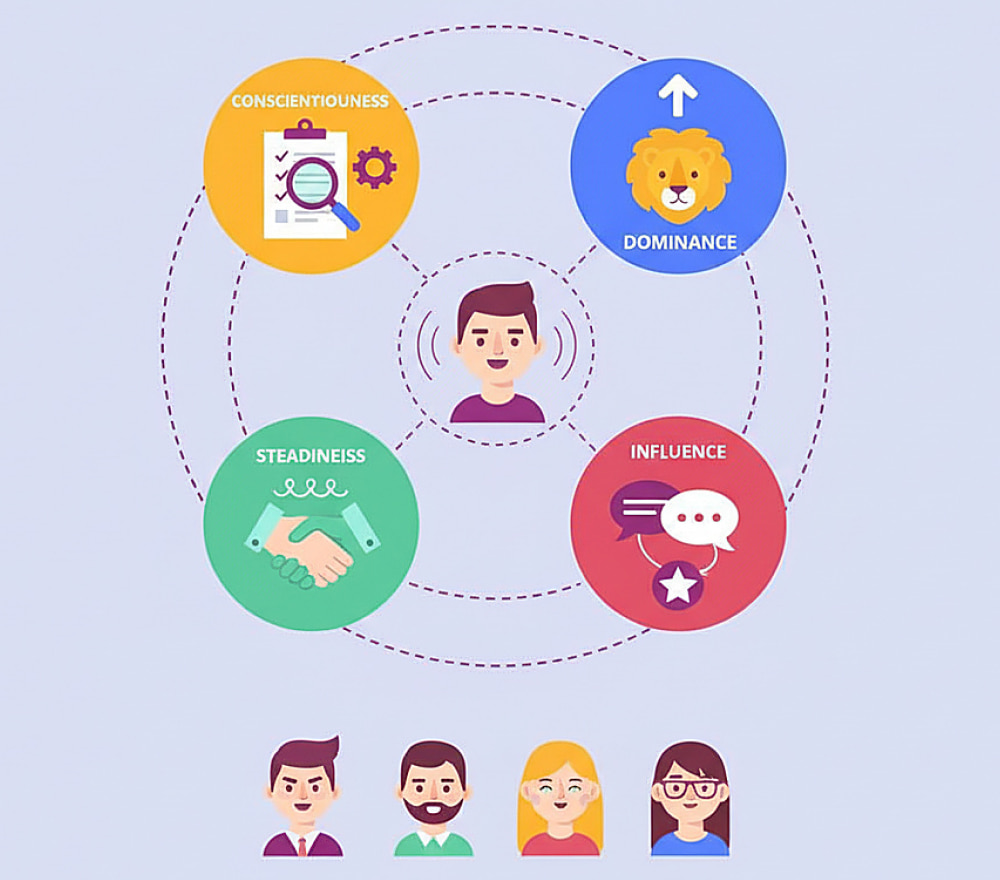DISC Profile Assessment: A Guide to Understanding Behavior

Take DISC Assessment Online
Get StartedThe DISC profile assessment has become an invaluable tool for understanding human behavior and personality traits in various contexts. Whether used in corporate settings or personal growth, this assessment provides insights into individual strengths, communication styles, and workplace behaviors. Created by psychologist William Marston in 1928, the DISC model categorizes behaviors into four distinct types: Dominance, Influence, Steadiness, and Conscientiousness. Each type sheds light on someone's work style, leadership qualities, and potential areas for improvement. By implementing the DISC assessment, businesses can foster more effective communication, team dynamics, and a more harmonious workplace environment.
The Components of DISC Workplace Profile
At the heart of the DISC workplace profile are the four categories that define behavioral tendencies. Each component serves a unique purpose, offering insights that help individuals and teams understand their strengths and challenges:
- Dominance: Focuses on results and problem-solving.
- Influence: Emphasizes social interaction and persuasion.
- Steadiness: Highlights dependability and cooperation.
- Conscientiousness: Stresses organization and quality.
The DISC profile wheel visually represents how these components interact with each other. The utilization of a DISC behavior profile can be a game-changer in the corporate world. This visual map, derived from the behavior profile, serves as a powerful tool enabling individuals and organizations to swiftly identify personality distribution amongst their teams. By comprehending these aspects, the collaboration process is enhanced significantly, and communication strategies can be tailored to resonate with different personality types. The result of this strategic approach is an organic boost in productivity levels and job satisfaction, making the workplace a more harmonious environment.
Benefits of Utilizing the DISC Personality Profile
Incorporating the DISC personality profile into workplace environments presents numerous benefits. The assessment aids in identifying strengths and potential challenges within teams, which can lead to improved working relationships and increased efficiency. One key advantage of the DISC behavioral profile is its ability to clarify communication styles. When team members understand each other's preferences, misunderstandings are minimized, promoting a more cohesive work environment. Furthermore, the DISC personality profile test supports personal development. Individuals gain self-awareness and can focus on areas that may need growth, improving their overall effectiveness. Businesses that leverage this tool in their training and development programs see enhanced leadership capabilities and better conflict resolution. The DISC assessment also aids in recruitment by matching candidates with roles that align with their natural inclinations and behaviors.
The Process of DISC Profile Testing
Engaging in the DISC profile testing process is straightforward yet profoundly insightful. Typically, individuals undertake a series of questions that determine their behavior patterns. The results provide a detailed analysis of one's style, highlighting dominant traits and less prominent areas. A variety of organizations offer the DISC profile assessment test to facilitate understanding and development in professional settings.
Many testing providers offer a DISC profile free test online, which can be an excellent starting point for individuals exploring this model. However, for an in-depth approach, comprehensive versions are recommended, providing detailed reports that delve deeper into personal and professional attributes. While some might prefer a DISC profile quiz as a fun introduction, engaging with a full assessment ensures a robust analysis that aids in growth and development.
Key Comparisons of DISC Behavioral Profile
| Aspect | Dominance | Influence | Steadiness | Conscientiousness |
|---|---|---|---|---|
| Focus | Results | People | Collaboration | Precision |
| Strengths | Decision-making | Persuasiveness | Reliability | Attention to detail |
FAQ: Common Questions About the DISC Assessment
- What is the origin of the DISC assessment?
The DISC assessment was developed by psychologist William Marston in 1928. It categorizes behaviors into four types: Dominance, Influence, Steadiness, and Conscientiousness, providing insights into personality and behavior.
- How is the DISC personality profile assessment conducted?
Participants complete a questionnaire designed to reveal behavior and communication preferences. The assessment results in a profile that outlines the individual's dominant characteristics and interactions with others.
- Can I take a free DISC profile test online?
Yes, there are free versions available online that provide a basic overview. However, for thorough analysis and detailed results, professional assessments are recommended.
- Who benefits from the DISC profile assessment test?
The assessment is beneficial for individuals seeking personal development, teams aiming for better cooperation, and organizations looking to improve communication and leadership strategies.
- Is DISC profile testing relevant only for workplaces?
No, while it is widely used in professional settings, the insights from DISC testing are applicable to personal relationships and self-improvement efforts as well.
